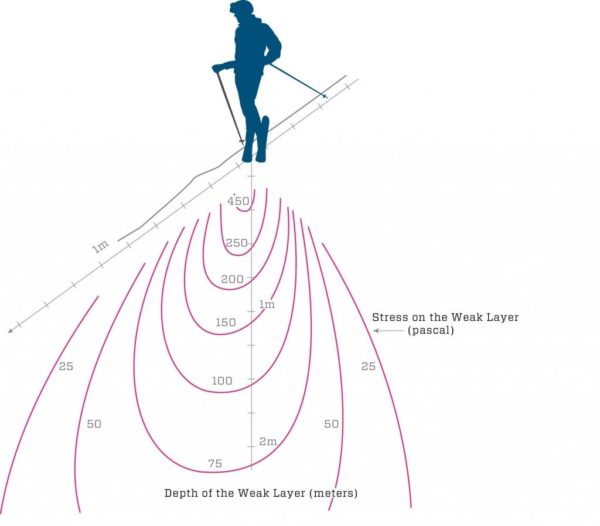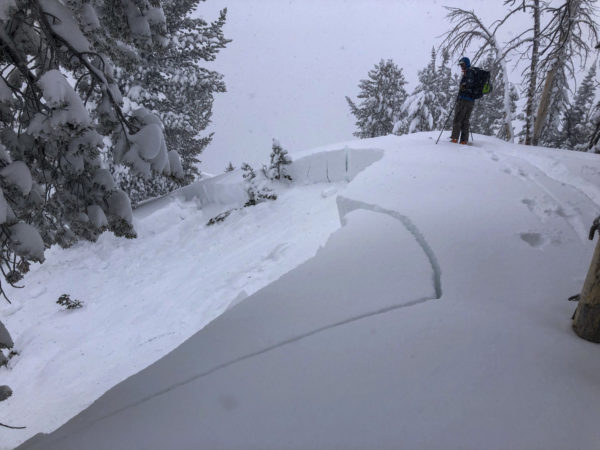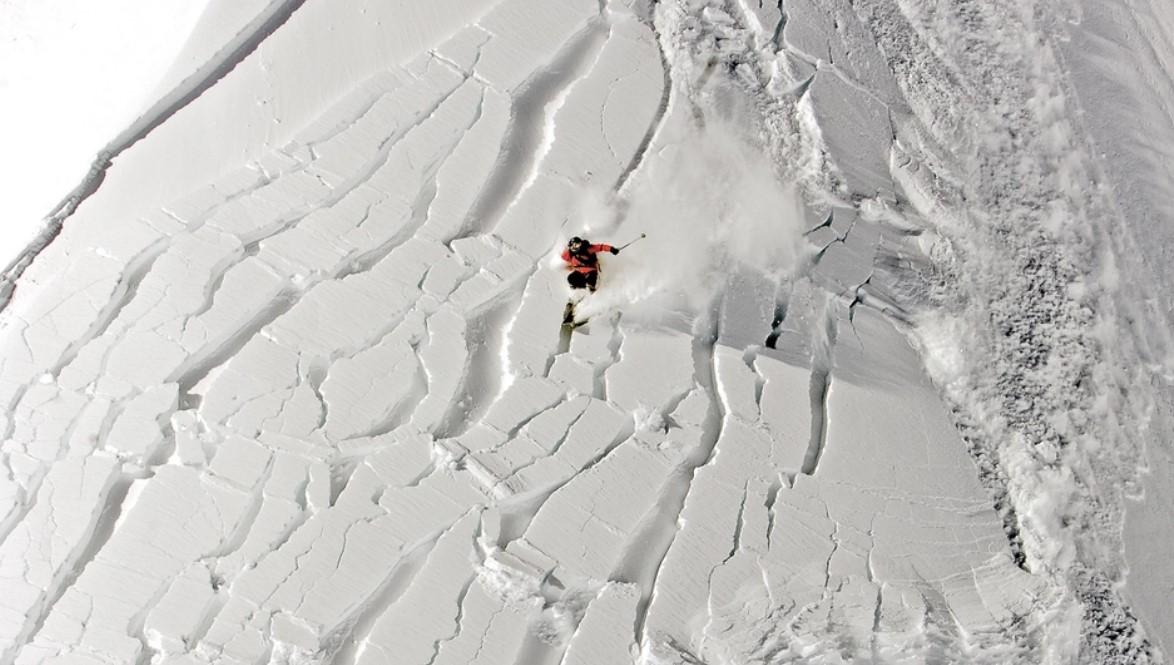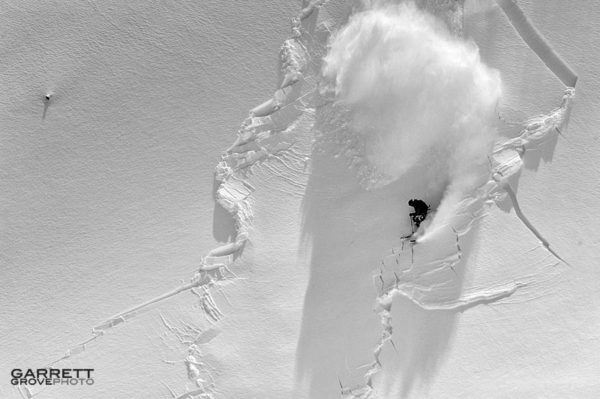Initiation of an avalanche by a person.
Human-triggered avalanches involve all forms of over-the-snow human travel, such as skiers, snowboarders, and hikers. Human-operated vehicles such as snowbikes, snowmobiles, and fat bikes typically fall into this same category. In roughly 90% of avalanche accidents, the avalanche is triggered by the victim or someone in the victim’s party. In other words, in most accidents, the snowpack sits in a state of natural equilibrium until the weight of a human tips the scales, triggering the avalanche. Humans, whether they are on foot, on skis, or riding a machine, induce a “bulb” of stress into the snowpack that radiates in diminishing intensity away from them. In most cases, weak layers need to be within about 3 to 5 feet of the snow surface for human-triggered slides.

A schematic illustration of a stress bulb beneath a skier. The stress bulb varies depending on snow conditions, slope angle, and movements of the skier. Credit: Salomon Mountain Academy

This skier remotely triggered the avalanche at a distance from the slope. Credit: Sawtooth Avalanche Center



